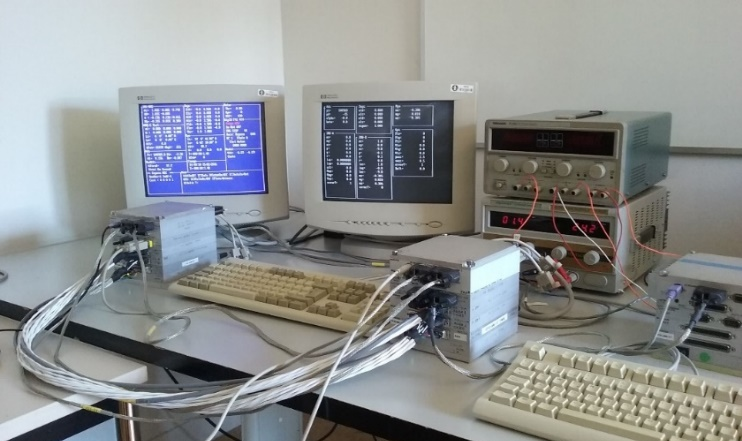SWIL-HWIL
Any new flight control modification must be tested before a real flight. Therefore an extensive battery of tests is needed to check any new control strategy, or even configuration small changes. We have to be sure about:
- Changes have to do what they are supposed to.
- No undesired interactions which could compromise aircraft performance are present after the modifications.
First tests should be handled at software level. This is what we call SWIL (Software In The Loop) tests. The tools we use for these tests, have been already introduced at Simulators section. Once the software phase is completed, it's time to carry out new tests in a hardware replica of the airborne flight control and airframe.
In order to do so, sensors and actuators are simulated in an auxiliary computer we call MSA -spanish acronym for Aircraft Model Simulation (Modelo de Simulación de la Aeronave)-. The objective is being able to test performance in the most realistic way, identifying any possible and unforeseen interaction between the change introduced in the flight control and the airborne hardware.

This is the test level we call Hardware in The Loop (HWIL) and it adds a new layer of reliability before any final flight tests.
